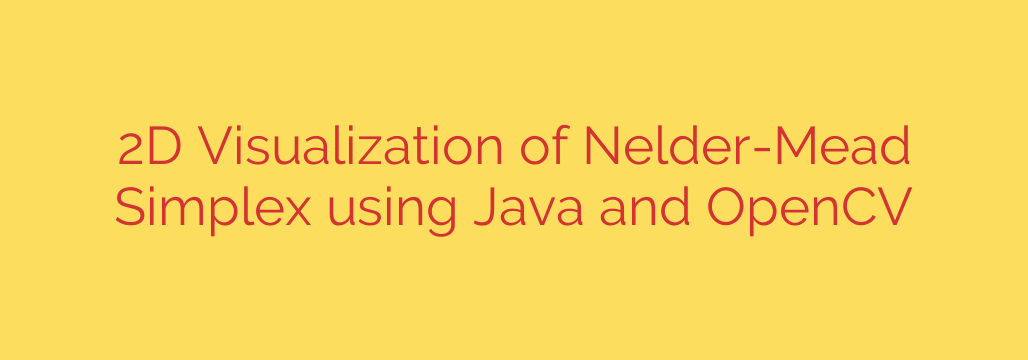
Understanding and visualizing complex algorithms is often the key to truly grasping their power. One such powerful tool in the realm of numerical optimization is the Nelder-Mead simplex algorithm, also known as the amoeba method. This technique is widely used for finding the minimum or maximum of an objective function in a multidimensional space, particularly when derivatives are not available or are difficult to compute.
While Nelder-Mead operates in N-dimensions, its behavior can be particularly illustrative when visualized in two dimensions. A 2D visualization allows us to see how the simplex—a triangle in this case—evolves and moves across the search space towards the optimal solution. This dynamic visual representation helps in understanding the core operations of the algorithm: reflection, expansion, contraction, and shrinkage. Observing these steps provides insight into how the simplex adapts its shape and position based on the function values at its vertices.
Implementing such a visualization requires a suitable programming environment and a library capable of handling graphical output. Using Java provides a robust platform, while integrating with a library like OpenCV offers powerful capabilities for drawing shapes, text, and managing image updates, making it an excellent choice for creating the graphical interface and rendering the animation of the simplex movements.
The process typically involves defining the objective function to be minimized, setting up the initial 2D simplex (three points), and then iteratively applying the Nelder-Mead rules. In each step, the algorithm calculates the function values at the vertices, identifies the worst, best, and centroid points, and then performs one of the transformation operations (reflection, expansion, or contraction) to generate a new point or a new simplex. If these fail, a shrinkage step is applied.
For the visualization, each iteration involves clearing the drawing surface, drawing the current simplex, potentially showing the points being tested (like the reflected or expanded point), and then updating the display to show the next state. This creates an animated sequence where the triangle moves and resizes, effectively demonstrating the algorithm’s strategy for navigating the optimization landscape and converging towards the minimum point of the function.
Creating this graphical representation is not just an academic exercise; it’s a valuable aid for learning and debugging. It makes the abstract steps of the algorithm concrete and observable, highlighting how local information (function values at vertices) drives the global search for the optimum. This combination of a powerful optimization algorithm and a clear visualization tool built with Java and OpenCV offers a compelling way to understand a fundamental method in numerical computing.
Source: https://itnext.io/visualizing-downhill-simplex-in-2d-with-java-and-opencv-implementing-the-nelder-mead-6d658d2280de?source=rss—-5b301f10ddcd—4








